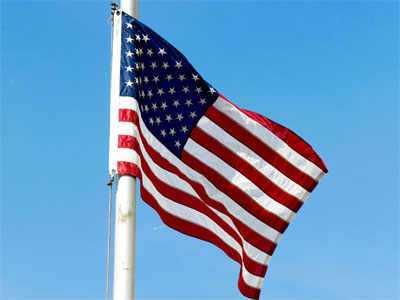INSUBCONTINENT EXCLUSIVE:
The US economy accelerated to a 4.1 percent pace of growth in the second quarter, the fastest since 2014, letting President Donald Trump
claim a win for his policies even though expansion is projected to cool.
The annualized rate of gains in gross domestic product was just shy
of the 4.2 percent median forecast in a Bloomberg survey
It followed first-quarter growth of 2.2 percent that was revised from 2 percent, the Commerce Department reported Friday
Consumer spending grew 4 percent, more than estimated, while nonresidential business investment climbed at a 7.3 percent clip.
Trump seized
Michael Feroli, chief United States economist at JPMorgan Chase Co
contributed 1.06 percentage point to the pace of growth, the most since 2013, partly on a surge in soybean shipments ahead of retaliatory
Inventories subtracted 1 point, the most since 2014, Commerce said, citing soybean stocks as well as those of drugs and sundries and
petroleum and related products.
Fed policy makers are expected to continue their gradual pace of interest-rate hikes aimed at keeping the
economy from overheating, without moving so fast that they could choke off growth
The dollar and yields on 10-year Treasuries declined after the report, which also showed inflation excluding food and energy was lower than
annual growth rate of more than 3 percent
The GDP estimate is the first of three for the quarter, with the other releases scheduled for August and September when more information
becomes available.
With the Friday data, the Commerce Department also released comprehensive GDP revisions going back decades
They showed a higher household-saving rate than previously reported, as well as faster growth in the first quarter of recent years, though
surpassed $20 trillion in nominal dollars in the first quarter.
Even with the relatively strong pace of growth last quarter, most economists
expect expansion to settle back to near its long-run rate, and some have flagged the risk of a recession in two years
marks for the economy.
GDP GoalCompared with a year earlier, second-quarter GDP rose 2.8 percent, just shy of the 3 percent mark, which was
underlying demand showed strength
Final sales to private domestic purchasers -- which exclude trade, inventories and government outlays -- grew at a 4.3 percent pace, the
second- fastest since 2014.
The pace of expansion in consumer spending, which accounts for about 70 percent of the economy, exceeded
projections for 3 percent and contributed 2.69 percentage points to growth
Purchases of new autos were a major factor, along with spending on health care, housing and utilities and food services and accommodations
low borrowing costs and contained inflation.
Business InvestmentThe growth in nonresidential business investment contributed almost 1
Spending on structures advanced 13.3 percent following a 13.9 percent gain in the prior period, while equipment investment cooled to 3.9
percent and intellectual property spending slowed to 8.2 percent.
Housing remained a weak spot in the economy amid signs that the sector is
poised for its broadest slowdown in years
Residential investment contracted at a 1.1 percent rate, the fourth decline in five quarters
The drag on overall growth, though, was negligible.
The contribution from net exports reflected a 9.3 percent gain in shipments abroad and a
0.5 percent increase in imports
In addition to soybeans, exports were boosted by petroleum and related products
2.1 percent rate, adding 0.37 percentage point to growth
Federal outlays rose 3.5 percent, the second-fastest rate since 2014, boosted by defense spending
After- tax incomes adjusted for inflation increased at a 2.6 percent annual pace, after 4.4 percent in the prior quarter
The saving rate fell to 6.8 percent from 7.2 percent, which was revised from 3.3 percent as part of the comprehensive update.
First-quarter
gross domestic income, adjusted for inflation, was revised to a 3.9 percent gain from a previously reported 3.6 percent.
Price data in the
in the first three months of the year.

